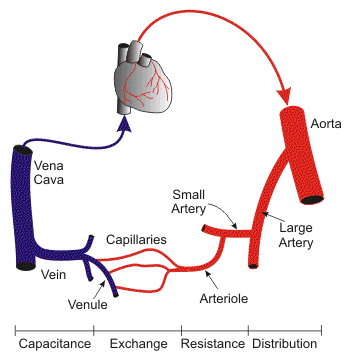
Following BLOOD CIRCULATION PRESSURE Guidelines Saves Lives, Dollars: Study
If all Americans had their raised blood pressure controlled, 56,000 fewer heart attacks and strokes would occur every year. And 13,000 less individuals would die -- without raising health costs, a fresh study claims.
Nevertheless, 44 percent of U.S. grownups with elevated blood circulation pressure don't have it regulated, in accordance with background information in the analysis.
"If we'd get blood pressure in order, we would not merely improve health, but we'd also save money," said researcher Dr. Kirsten Bibbins-Domingo, professor of medication at the University of California, SAN FRANCISCO BAY AREA School of Medicine.
"An investment in ways of lower blood circulation pressure will yield big health benefits in addition to economic advantages," she said.
Like measures could include even more medical appointments for those who have elevated blood pressure, home blood circulation pressure monitoring and measures to boost medication compliance, Bibbins-Domingo suggested.
In 2014, a specialist panel appointed by the U.S. National Coronary heart, Lung, and Bloodstream Institute released new recommendations for treating raised blood pressure. These fresh guidelines target people who have higher blood circulation pressure levels.
Moderate raised blood pressure means a systolic pressure (the very best reading) of 140 to 159 mm Hg or perhaps a diastolic pressure (underneath reading) of 90 to 99 mm Hg. Serious high blood pressure will be 160 mm Hg or even more over 100 mm Hg or even more.

The purpose of treatment would be to reduce these numbers. The American Coronary heart Association defines regular blood circulation pressure as systolic stress of significantly less than 120 mm Hg and diastolic stress of significantly less than 80 mm Hg.
"There is absolutely no reason our country must not be doing better at controlling blood circulation pressure," said lead writer Dr. Andrew Moran, an assistant professor of medication at Columbia University INFIRMARY in NEW YORK. "You can find medications which are effective, safe and cheap, and we're able to even cut costs by treating people."
But many people have to be convinced of the necessity to
lower their blood circulation pressure, he said.
You can see it here: Stethoscope for nurses 2015
"High blood pressure, in contrast to other situations where you have signs and symptoms constantly like chest pain, is without signs and symptoms for several years, and many individuals don't understand if they're not feeling poor they ought to [still] be taking medicines," Moran said.
For the scholarly study, published in the Jan. 29 problem of the brand new England Journal of Medication, the scientists developed some type of computer simulation to project the result of guideline adherence on grownups aged 35 to 74. They specifically viewed treatment costs and lifestyles saved.
Total implementation of the brand new guidelines would reduce deaths and therapy costs for women and men ages 45 to 74 with cardiovascular disease, the research found. It could also prevent people that have moderate raised blood pressure from developing cardiovascular disease and stroke, Bibbins-Domingo said.
The study suggests it isn't cost-effective to take care of women aged 35 to 44 who don't possess cardiovascular disease for moderate raised blood pressure. However, Moran said this getting might transformation if these information were extended over various decades.
The researchers didn't consider the cost-effectiveness of treating raised blood pressure in patients more than 74, that is the focus of another study.
"Raised blood pressure remains a respected preventable reason behind heart attacks, heart failing, strokes, kidney disease, and premature deaths from center stroke and disease," stated Dr. Gregg Fonarow, a spokesman for the United states Coronary heart Association and a professor of cardiology at the University of California, LA.
The American Cardiovascular Association, American University of Cardiology and the U.S. Centers for Disease Control and Avoidance recommend usage of these guidelines to accomplish better blood circulation pressure control, Fonarow said.
"This study shows that these interventions, even though they might need additional annual expenses of $600 to $1,230 per patient, would be wise investments and offer substantial value," Fonarow added